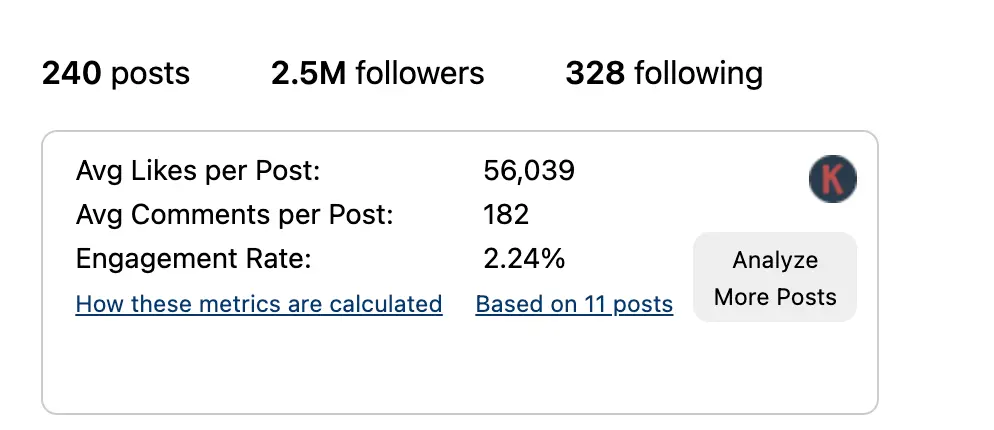
How to Choose the Right Influencers for Your Brand
Influencer marketing has become an indispensable strategy for brands to reach new audiences, build credibility, and foster engagement. However, the success of any influencer marketing campaign depends heavily on choosing influencers who align with your brand values and resonate with your target audience. This guide will walk you through the essential steps to select the right influencers for your brand, ensuring your campaign achieves its desired results.
1. Define Your Goals
Before searching for influencers, it’s crucial to clearly define your campaign goals. Knowing what you want to achieve helps guide the influencer selection process. Some common goals include:
Increasing Brand Awareness: Expanding your brand’s visibility and reach.
Driving Sales: Boosting product sales and conversions.
Building Credibility: Enhancing your brand’s trustworthiness through respected voices.
Engaging with Your Audience: Creating interactive and engaging content.
Clearly defined goals will help ensure you choose influencers who can help you accomplish your objectives.
2. Understand Your Target Audience
To choose the right influencers, it’s vital to have a deep understanding of your target audience. Consider key factors like:
Demographics: Age, gender, location, income, and education.
Interests: Hobbies, preferences, and lifestyle activities.
Behavior: Online habits, purchasing behavior, and content consumption.
Knowing your audience’s preferences will help you identify influencers who have similar followers, ensuring better alignment and engagement.
3. Identify Relevant Platforms
Different social media platforms cater to distinct types of influencers and content. Based on your goals and audience, select the most appropriate platforms for your campaign. For example:
Instagram: Best for visual content and lifestyle brands.
YouTube: Ideal for in-depth tutorials, reviews, and how-to videos.
TikTok: Great for short, engaging videos targeting younger audiences.
LinkedIn: Suitable for B2B marketing and professional content.
Twitter: Effective for real-time engagement and conversation.
The platform you choose will influence the type of influencer you select.
4. Assess Influencer Types
Influencers can be categorized based on their follower count:
Nano-Influencers (1K–10K followers): Known for high engagement and authentic connections.
Micro-Influencers (10K–100K followers): Niche audiences with strong influence and engagement.
Macro-Influencers (100K–1M followers): Broader reach with established authority and professionalism.
Mega-Influencers (1M+ followers): Large-scale reach but often come with higher costs.
Choose the influencer type that aligns with your campaign goals and budget.
5. Evaluate Influencer Content
Examine the influencer’s content to ensure it aligns with your brand’s values, aesthetics, and messaging. Consider the following factors:
Quality: High-quality images, videos, and well-written captions are key indicators of professionalism.
Authenticity: Genuine, relatable content that doesn’t feel overly commercial is more likely to engage audiences.
Consistency: Regular posting and consistent engagement with followers show the influencer’s commitment to maintaining their audience.
Tone and Style: Ensure the influencer’s tone and style align with your brand’s voice.

Sample metrics from an Influencer’s Instagram profile.
6. Check Engagement Rates
An influencer’s follower count alone doesn’t guarantee success. The engagement rate (likes, comments, shares) is a crucial metric to evaluate how actively their audience interacts with their content. High engagement rates indicate an engaged, loyal audience that is more likely to respond to your brand’s message.
7. Analyze Audience Demographics
It’s important to ensure that the influencer’s followers align with your target audience. Most influencers can provide insights into their audience demographics, including age, gender, location, and interests. Choose influencers whose audience closely matches your own target market to maximize the impact of your campaign.
8. Review Past Collaborations
Look into the influencer’s history of brand collaborations to assess their compatibility and performance. Consider:
Brand Fit: Have they worked with brands similar to yours?
Campaign Success: Did previous campaigns generate engagement and reach?
Professionalism: Do they maintain a professional relationship with brands and deliver on time?
Reviewing their past work can help you determine if they are a good fit for your brand.
9. Set Clear Expectations
Once you’ve identified potential influencers, set clear expectations for the collaboration. Discuss details such as:
Deliverables: Number and type of posts (e.g., Instagram stories, YouTube videos).
Timeline: Campaign duration and posting schedule.
Compensation: Decide on payment terms, whether monetary or product-based.
Content Guidelines: Provide brand messaging, hashtags, and creative direction to ensure content aligns with your campaign.
Clear communication and expectations ensure a smooth partnership and better results.
10. Use Influencer Marketing Tools
Several tools can help you find and evaluate influencers. Consider using:
BuzzSumo: Identifies top influencers based on content performance and engagement.
Influencity: Provides analytics and insights into influencer demographics and authenticity.
HypeAuditor: Analyzes influencers’ engagement rates and detects fake followers.
Traackr: Helps manage influencer relationships and track campaign performance.
These tools can help streamline the process and ensure you choose the right influencers.
11. Monitor and Measure Performance
After launching your campaign, it’s important to monitor and measure its success. Track key metrics such as:
Engagement: Likes, comments, shares, and overall engagement rate.
Reach: Total number of people who saw the content.
Conversions: Sales, sign-ups, or other desired actions resulting from the campaign.
Sentiment: The overall sentiment and reaction from the influencer’s audience.
Use this data to refine your approach for future campaigns.
Conclusion
Choosing the right influencers for your brand is critical to the success of your influencer marketing strategy. By understanding your goals, audience, and the influencer’s engagement, content quality, and audience demographics, you can select the right influencers who will effectively amplify your brand’s message and drive meaningful results.
Ready to boost your brand with the right influencers? Contact Hopes Fulfilled Marketing & Consulting for a personalized consultation, and let our experts help you create an effective influencer marketing strategy tailored to your business needs.
